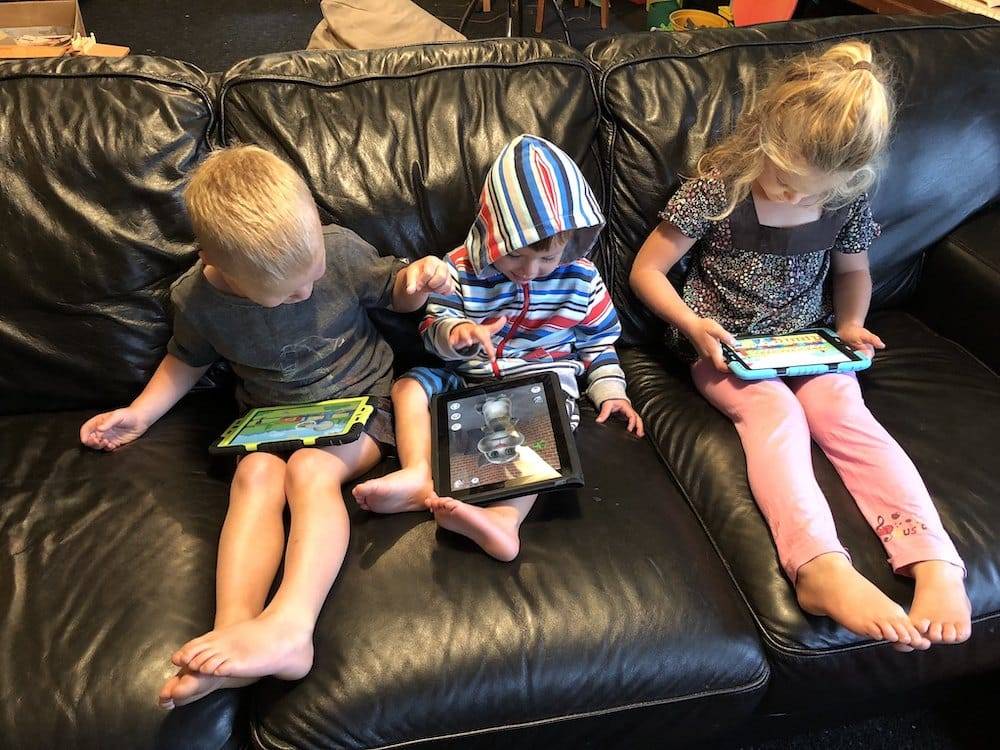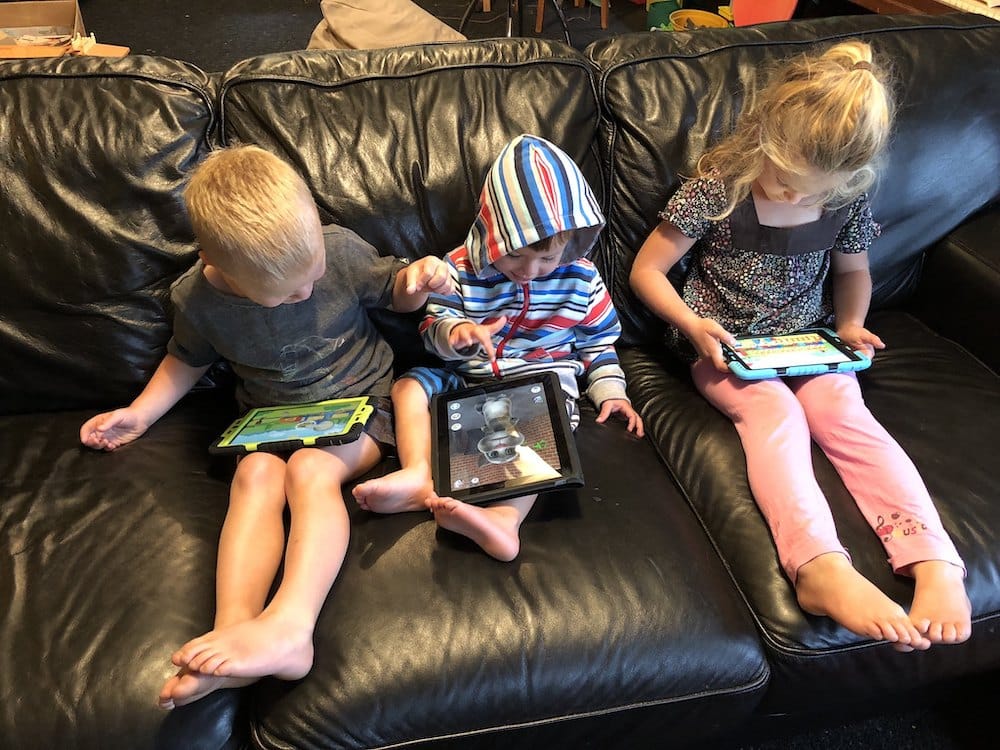Toddlers’ screen time: Links between screen time and language development

This post is part of our series on Digital Media and Children Under 3, published with collaboration from the journal, Infant Behavior and Development. The featured research appeared in a special issue that focused on how young children engage with technology and ways that parents can facilitate media engagement to promote positive development.
Key takeaways on Toddler’s Screen Time for caregivers
- Research shows that most toddlers spend a significant amount of time watching screens – an average of about 4 hours a day.
- Toddlers who spend more time watching screens, such as television, videos, and digital games, may have fewer expressive language skills, or the ability to express themselves verbally.
- Caregivers can support language development by having conversations with their child during or after screen time and by engaging in high-quality language interactions without screens at other times of the day (e.g., while on transportation, at meals).
Why screen time might affect toddlers’ language development
Young children rapidly learn words by interacting with their environment, such as through conversations with their caregivers. However, how much language children are exposed to in the home environment varies widely across families, contributing to school readiness gaps between children from low- and middle-income backgrounds. Children’s screen time, including watching television and videos, and playing digital games, is one early experience that may be related to their language development.
Many researchers have theorized about the impact of screen time on young children’s language development. First, high levels of screen time may replace interaction with a caregiver who can respond to and elicit responses from children. This tailored back-and-forth interaction, or contingent responding, influences learning and allows children to practice their language skills.

Photo: Thom Cochrane. Creative Commons.
Second, although some media products for toddlers are marketed as educational, evidence suggests that children this age have trouble learning from media, perhaps because videos are often simpler than real-life experiences and replace rich real-world stimuli. This may be especially important for toddlers from homes with low incomes, who are likely to experience high levels of media exposure and are most at risk for delays in language development.
Studying screen time and language in toddlers
To examine the relationship between screen time and toddlers’ language development, we conducted a study that asked two questions:
- How much screen time do toddlers from homes with low incomes experience?
- Is the amount of screen time related to toddlers’ language development?
Our study used data from the Kids in Columbus Study, a longitudinal study on midwestern U.S. two- and three-year-olds living in poverty (i.e., 185% of U.S. Poverty Income Guidelines). We collected data on 157 toddlers; 54% were Black, 47% were White, and 8% were Latino (respondents could select all races and ethnicities that applied).
More screen time was associated with lower levels of language skills for toddlers.
Caregivers completed surveys on toddlers’ screen time during an average weekday (e.g., in front of a television watching programs, videos, and DVDs; playing video games; using computers, cell phones, handheld video games, tablets, smartphones, and other electronic devices). About six months later, we observed toddlers’ language abilities by taking a standardized measurement of what words toddlers understood and what words they could speak.
How much screen time do toddlers from homes with low incomes experience?
The toddlers’ amount of screen time varied. While some families reported little to no screen time, a substantial portion reported more than 8 hours per day. The average amount of daily screen time was nearly 4 hours. This finding is similar to nationally representative data showing that daily screen time for children under eight years old living in homes with low incomes was 3.5 hours.

Photo: Karolina Grabowska. Pexels.
More screen time was related to lower levels of expressive language
Next, we sought to determine whether the amount of toddlers’ screen time related to their language development. We measured language development by looking at toddlers’ scores on two tests: the Bayley Scales of Infant and Toddler Development and the Peabody Picture Vocabulary Test. More screen time was associated with lower levels of language skills for toddlers.
Interestingly, screen time was related only to toddlers’ expressive language (i.e., their ability to express themselves verbally) and not to their receptive language (i.e., how well they understand when others speak to them) or vocabulary (i.e., the words they understand). Screen time could influence children’s ability to use language themselves because it may replace opportunities to practice talking, such as conversations with a caregiver or other adults.
How can caregivers support children’s early language development during screen time?
Today, it is challenging, and probably not necessary or advisable, to avoid all screen time. Yet caregivers can take several steps to support children’s language development in the context of our digital world.
It is challenging, and probably not necessary or advisable, to avoid all screen time.
First, caregivers can co-participate in the screen time with the child. They can talk with their child about what they are watching or doing on screens. Second, they can engage in high-quality language interactions without screens at other times of the day (e.g., while on transportation, at meals). And third, because not all screen content is created equal, caregivers can monitor what children are using and help them seek out high-quality programming, including educational shows and applications. Caregivers can look to sources informed by research, such as Common Sense Media, to find age-based recommendations.
Our finding that more screen time was related to lower levels of expressive language skills is especially important because children from homes with low incomes are already at risk for language delay and lower levels of school readiness than their peers from middle- and upper-income homes. More screen time could further widen this gap. Researchers may benefit from comparing relations between screen use and language development in children from other income levels (e.g., middle and high income).
In addition, researchers need to examine whether using educational media or using media with an adult is less likely to be related to lower levels of language skills than is using screen time for entertainment or alone. Studies could also explore potential interventions to support caregivers in providing stimulating language environments for children and keeping screens as a fun, but not predominant, part of their lives.
















Leave a comment